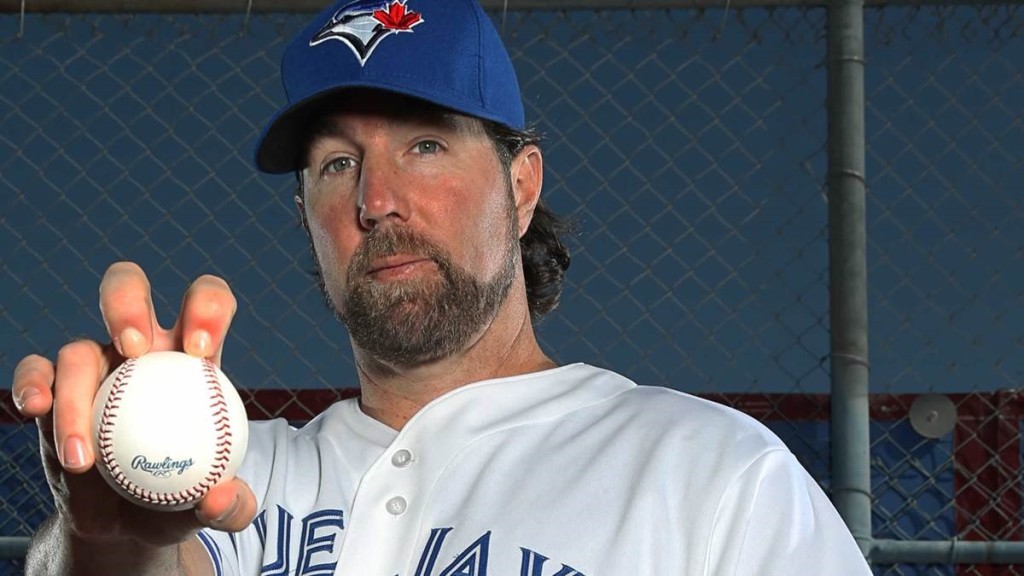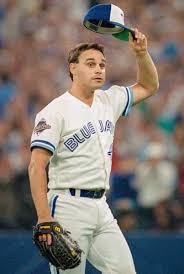A Comparison of the 2015 Team with Its 1992 Predecessor
Part Five: Examining the Starting Pitching: Back-end of the Rotation

Source: http://rawlings.com/
Traditionally speaking, the back-end of the starting rotation is where General Managers (GMs) can go “bargain hunting” for cheap options via non-tendered players and/or wavier claims. Why? With the front and middle of the rotation sorted out, GMs can “pencil in” a certain number of wins which the team can expect to pocket over the course of the season. Ideally, the top three starting pitchers would do their job as “innings eater” by each supplying the ballclub with at least two hundred innings, thereby giving the team six hundred innings with the remaining two hundred innings being spread to multiple candidates. Unless one or more slots in the back-end of the rotation can be filled internally be promising young starters who are in their pre-arbitration years—think of a young Roy Halladay back in 2000—GMs would in all likelihood shop for multiple serviceable pitchers, including signing pitchers to minor league contracts with an invitation to spring training who can give the team a reasonable chance to win when pitching and have them compete for the remaining one or two spots in the back-end of the rotation. More than often, the back-end of the rotation typically feature starters who have a .500 (or near .500) record with an unspectacular era run average (ERA) and low strikeout (K) totals.
One of the reasons why teams have to round out the back-end of their starting rotation with non-front and middle of the rotation pitchers is due to the financial landscapes of Major League Baseball. With the going prices for aces reaching the neighbourhood of seven years for over two hundred million dollars (e.g., Max Scherzer earned a seven-year, $210 million contract with Washington after signing with the Nationals as an unrestricted free agent on 21 January 2015), putting together an entire starting rotation with frontline starters is near if not simply unrealistic. Even the New York Yankees, which seemed to have unlimited financial resources under then-owner George Steinbrenner, did not bolster five aces in their starting rotation—albeit they have multiple front of the rotation starters when they won four World Championships within a span of five seasons from 1996 to 2000. If anything, the Philadelphia Phillies would probably be team remembered as having rolled out the most aces in a starting rotation when they had Halladay, Cliff Lee, Roy Oswalt, and Cole Hamels occupying the first four slots in their rotation back in 2011. Still, all championship-calibre need a strong supporting cast and it comes as no surprise that playoff teams, at the very least, have decent starters in the back-end of their station, just as the 2015 and 1992 Toronto Blue Jays did.
Number Four Starter: R.A. Dickey (2015) versus Jimmy Key (1992)
Analysis: While Dickey was not able to replicate his National League Cy Young Award season from 2012 when he went twenty and six with the New York Mets before being traded to Toronto, he has been a very steady force in the starting rotation since joining the Blue Jays. Sceptics were quick to criticize Dickey in the early part of the 2015 season when the knuckle ball pitcher posted a dismal three and ten record with a ballooned 4.87 ERA in eighteen starts. Yet the savvy veteran was able to battle and recover by turning in an impressive eight and one record with an excellent 2.80 ERA in fifteen starts in the second-half of the season. At the end of the day, Dickey give Toronto exactly what they were looking for from a starting pitcher in the back-end of the rotation by finishing with a .500 record, going eleven and eleven while logging 2141⁄3 innings. In fact, upon tempering with the ultra-high expectation of having Dickey serve as the ace of the Blue Jays, he has lived up to being a good starting pitcher for Toronto over the past three seasons when we take into account the fact that he also had plus .500 records (going fourteen and thirteen in thirty-four starts) in 2013 (with a decent 4.21 ERA while pitching 2242⁄3 innings) and 2014 (with a respectable 3.71 ERA while logging 2242⁄3 innings). Unfortunately, Dickey’s 2015 postseason performance is more polarizing because after holding the powerful Texas team to one earned run in 42⁄3 innings (resulting in an 1.93 ERA) in his only start in the 2015 American League Division Series (ALDS) before giving way to David Price in relief, Dickey was torched by the well-rounded Kansas City ballclub for five runs (four earned) in only 12⁄3 innings (translating into an ugly 21.60 ERA) in his only start in the 2015 American League Championship Series (ALCS).

As for Key, who served as the team’s number two starting pitcher behind ace Dave Stieb for many years in the 1980s, during which he won a career-high seventeen games in 1987, he also fulfilled the role of back-end starter with no difficulties as he posted a thirteen and thirteen record in 1992 with a 3.53 ERA in thirty-three starts while pitching 216 2⁄3 innings. In other words, his performance is exactly in line with where about GMs expect it to be from a good back-end of the rotation starting pitcher. In the postseason, Key did more than his share when he first held the Oakland Athletics to only three hits with no runs (meaning a 0.00 ERA) over three innings in his only appearance in the 1992 ALCS in relief, followed by winning two games against the relentless Atlanta Braves in two appearances, one as the starter in game four and one as a reliever in the deciding game seven. Key’s contributions to Toronto in the 1992 World Series cannot be understated as his versatility– i.e., pitching effectively both as a starter and as a relief pitcher– gave the Blue Jays exactly what the team needed in the rotation and the bullpen.
Verdict: If we are judging from their regular season numbers exclusively, I would say that Dickey and Key would end up in a stalemate because both pitchers effectively posted .500 records and were able to log over two hundred innings. Yet, I cannot help but give the nod to Key seeing that he did not lose a single game—starting or in relief—in his three total playoff appearances. Conversely, even though Dickey was a big reason as to why Toronto was able to beat the Rangers in game four of the 2015 ALDS on 12 October, he imploded against the Royals in game four of the 2015 ALCS on 20 October, leaving a blemish on his consistency from a game-to-game basis. Therefore, the tiebreaker goes to Key on the strength of his postseason performance.
On deck: The continuation of my evaluation, and my final words on the back-end of the starting rotation for the two editions (2015 and 1992) of the Toronto Blue Jays so be sure to tune into Part Six!
